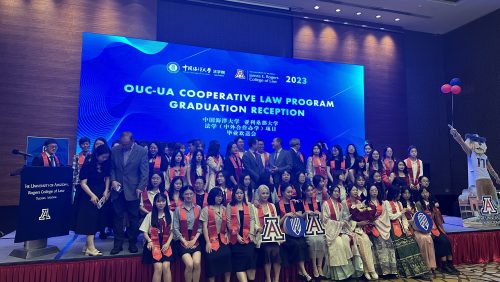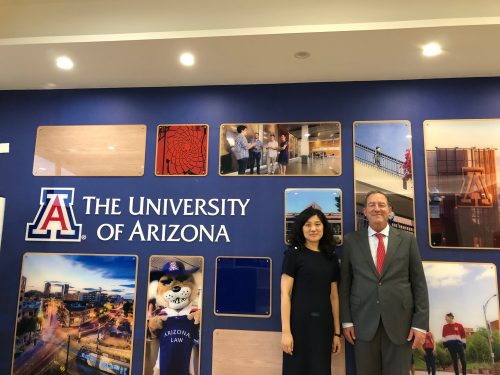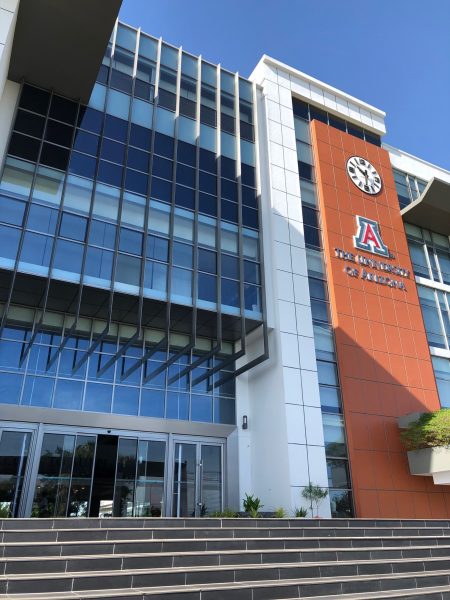Tanya Ence, El Inde Arizona

(Photo credit: Charlotte MacInnis)
It turns out that the University of Arizona has far more international students
than reported in the fall census reports depending on how you define international students.
Fall census records showed that over 3,600 international students from 127 different
countries were enrolled at Tucson’s UA main campus.
However, according to Assistant Dean of Operations and Student Services at Arizona
International, Charlotte MacInnis, an additional 2,700+ students are earning UA degrees while remaining in their home countries.
Surely that gives new meaning to the term “international student.”
The University of Arizona’s Microcampus Network, which consists of 16 microcampuses in 12 different countries, has taken UA global. The university has become a driving force in the
internationalization of U.S. higher education.
“In contrast to universities that build huge and extensive campuses, microcampuses can
be done in partnership with other educational or government institutions,” Marc Miller, dean of
the James E. Rogers College of Law, explained.
That cuts down on costs while also providing an opportunity for collaboration and
research between international institutions. Students in the program benefit by earning dual degrees — one from the UA and the other from their home university.

(Photo courtesy: Marc Miller)
The first UA microcampus was launched in 2015 at Ocean University of China (OUC)
where students can earn a bachelor of arts in law. There are 500 students currently enrolled in the
program.
China is the only country of the 12 in the network with more than one UA-partnering
university, but each of its four microcampuses offer only one degree. Other countries provide multiple degree options at single locations.
Program modalities differ between microcampuses, depending on the regulations of the
country and region, or on what the students can afford, MacInnis said.
China’s Ministry of Education requires that UA professors teach in-person, so faculty
members teach on-site there. Additionally, all the UA faculty who teach at microcampuses in China are English speakers, who teach in English, which was at the “emphatic insistence” of the Chinese partner
universities, Miller said.
Students are taught in Mandarin-Chinese while focusing on their Chinese degrees in the
first two years, switching to English and their UA degrees in their junior and senior years.
According to Miller, over 50% of the students enrolled at OUC go on to pursue graduate
or advanced studies in countries like the U.S., UK or Australia.
“We can’t tell if it’s the language skills or the dual degree training that’s doing it but we
know that they have been incredibly successful in China and around the world,” he said.
Salil Gupta, Arizona International’s chief advisor for South Asia, said that
microcampuses also increase UA’s visibility and influence abroad by serving as “a platform for
publicity and support outreach activities across the country, strengthening the university’s
presence and impact.”
Miller, explaining their branding influence in China, said, “There are other students in
other programs at Ocean University of China who are very aware of the University of Arizona,
and because it’s a unique program in China we get applications from Chinese law students and
lawyers for our LLM and JD programs from across China.”
“They are very aware of the program at Ocean,” he continued. “It’s been helpful on
multiple fronts. It’s just another reason why having some partnership and physical presence in a
microcampus is really quite different from simply offering an online degree.”

(Photo credit: Marc Miller)
Last year, UA opened its first tribal microcampus in Arizona, serving the Pascua Yaqui Tribe. It is the first microcampus in the U.S., and in partnership with an indigenous tribe rather than a university. The microcampus is housed in a 5,500-square-foot space east of the Pascua Yaqui reservation, formerly Tucson Unified School District’s Hohokam Middle School.
“It’s more around technical support and linking people to services,” Miller explained. “It’s been quite popular, and the programs continue to grow.”
“I am confident there will be more microcampuses with others of the generally recognized tribes of Arizona, soon,” he said. “Those are active conversations.”
